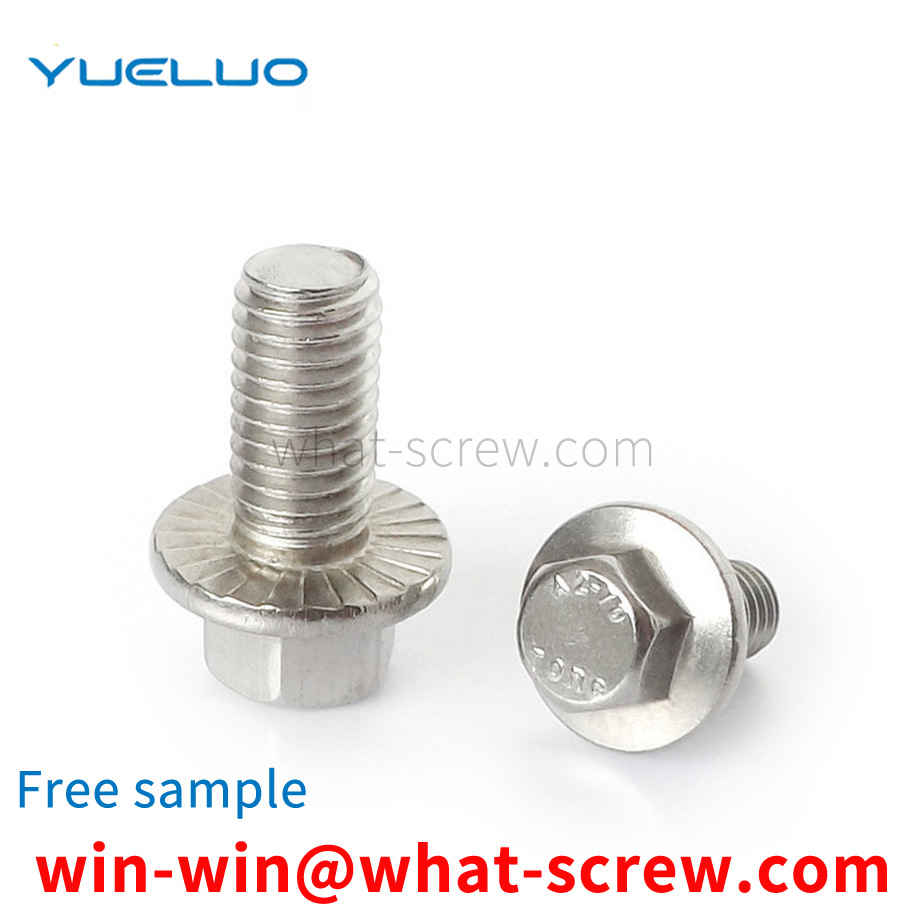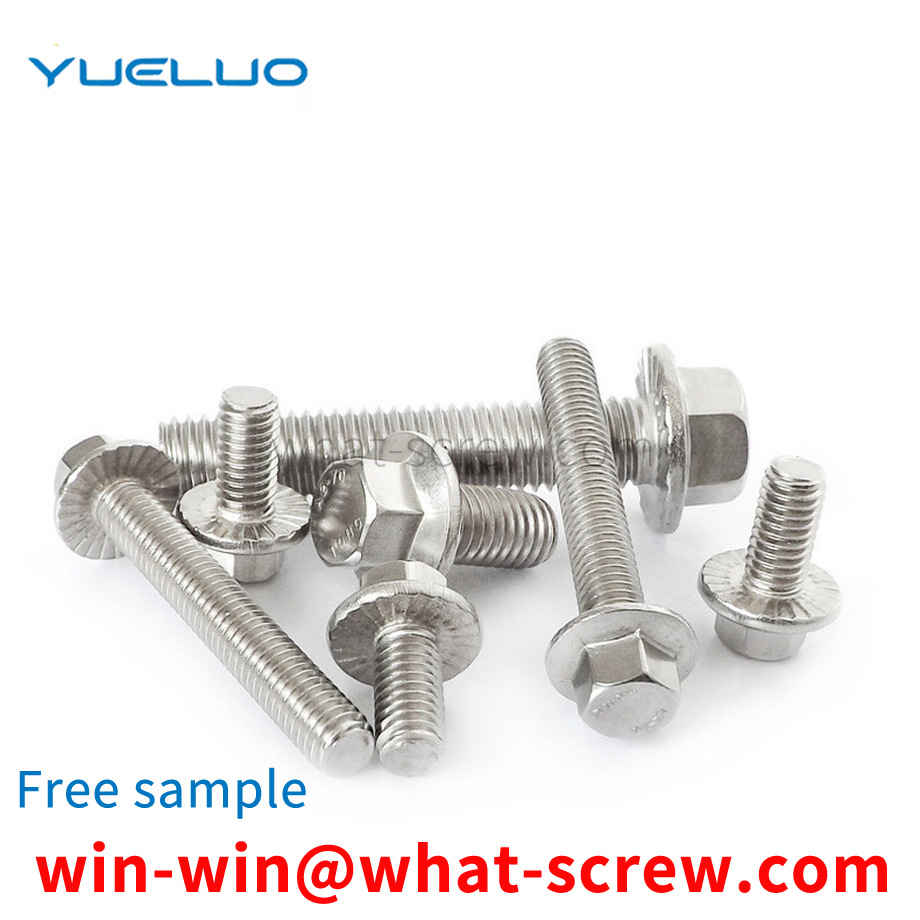Now the screw itself is made of metal, so it is easy to rust, especially screws in harsh weather environments that are exposed to the air for a long time, such as air conditioners, wires, etc. In the existing technology, the shape of the screw has been fixed, and the structure of the screw itself is composed of a shaft with twill in the middle and a polygonal structure with stripes on the outside. OK, but because of the installation of some equipment, it needs to be exposed to the air for a long time. For example, the outdoor unit of the air conditioner must be installed in the outdoor area, and the outdoor can not be sheltered from wind and rain, so after long-term sun and rain, the screw The surface is easy to rust. If the rust is serious to a certain extent, the nut will be embroidered to death. Once the external machine needs to be disassembled one day, the embroidered screw will lose its use value and give workers to the workers. The disassembly and assembly of the screw has caused a lot of trouble, because the embroidered screw cannot be unscrewed directly. The only method used is to cut off the shaft in the middle of the screw with a hacksaw, or discard the entire screw structure. Since the shaft in the screw has been inserted into the middle of the wall, this waste is not good for both aesthetics and safety. To solve the rust problem of the screw, the existing technology is to improve the material of the screw, or to maintain it regularly, but this method itself is time-consuming and labor-intensive, and it is a waste of resources.
Commonly used national standard GB41Ⅰ type hexagon nut——C grade GB6170Ⅰ type hexagonal nut——, B grade GB6171Ⅰ type hexagonal nut-fine thread-, B grade GB6172 hexagonal thin nut——, B grade - chamfering GB6173 hexagonal thin nut—— Fine thread—, B grade GB6174 hexagonal thin nut—B grade—without chamfering
In view of this, a screw with waterproof, anti-loosening and anti-removal functions is provided. A screw comprises a screw rod and a screw head connected with the screw rod, the diameter of the screw head is larger than the diameter of the screw rod, and an annular groove is formed around the screw rod on the surface of the screw head connected with the screw rod, The screw head is also provided with a through hole penetrating the screw head, and the through hole is communicated with the annular groove for filling the annular groove with adhesive substances. Compared with the prior art, the screw provided by Guangdong Yueluo Hardware Industry Co., Ltd. has a structure in which a through hole and an annular groove are arranged on the screw head, so that after the screw is locked into the screw hole, the screw head is not locked. A glue storage flow channel is formed between the contact surface with the part, and then the glue material is injected into the glue storage flow channel through the through hole to form a sealing annular rubber ring, so as to better ensure the waterproof performance of the screw joint. Furthermore, by connecting the through hole with the screwdriver groove, while forming a sealing annular rubber ring, the driver groove can be directly filled for the purpose of preventing dismantling.
Commonly used are R-type rivets, fan rivets, blind rivets (blind rivets), tree rivets, semi-circular head, flat head, semi-hollow rivets, solid rivets, countersunk head rivets, blind rivets, hollow rivets, these are usually used Self-deformation connection is riveted. Generally less than 8 mm with cold riveting, larger than this size with hot riveting. But there are exceptions. For example, the nameplate on some locks is riveted by the interference between the rivet and the lock body hole.
Surface treatment process of screws 1. Types of surface treatment: Surface treatment is the process of forming a covering layer on the surface of the workpiece by a certain method. The purpose is to give the surface of the product a beautiful and anti-corrosion effect. The following methods are as follows: 1. Electroplating: Immerse the part to be electroplated in an aqueous solution containing the metal compound to be deposited, and pass the current through the plating solution to precipitate and deposit the electroplated metal on the part. Generally, electroplating includes galvanized, copper, nickel, chromium, copper-nickel alloy, etc., and sometimes blackening (blue), phosphating, etc. are also included. 2. Hot-dip galvanizing: It is done by immersing the carbon steel parts in a zinc-melting bath with a temperature of about 510°C. The result is that the iron-zinc alloy on the surface of the steel gradually becomes passive zinc on the outer surface of the product. Hot dip aluminizing is a similar process. 3. Mechanical plating: The surface of the product is impacted by the particles of the plated metal, and the coating is cold welded to the surface of the product.
We have many years of experience in the production and sales of screws, nuts, flat washers, etc. The main products are: copper hollow rivets, key flat keys, high-strength pins, elastic washers and other products, we can provide you with suitable fastener solutions for you Program.



















 Service Hotline
Service Hotline




